Food is a pretty big deal. We need it to live, but it can be pretty great to make it fancy too. It’s an expression of who we are, and a great source of comfort. The Monster Hunter games have always known this, and incorporated cooking big meals into the whole cycle of the game. That system is changed in Monster Hunter Wilds.
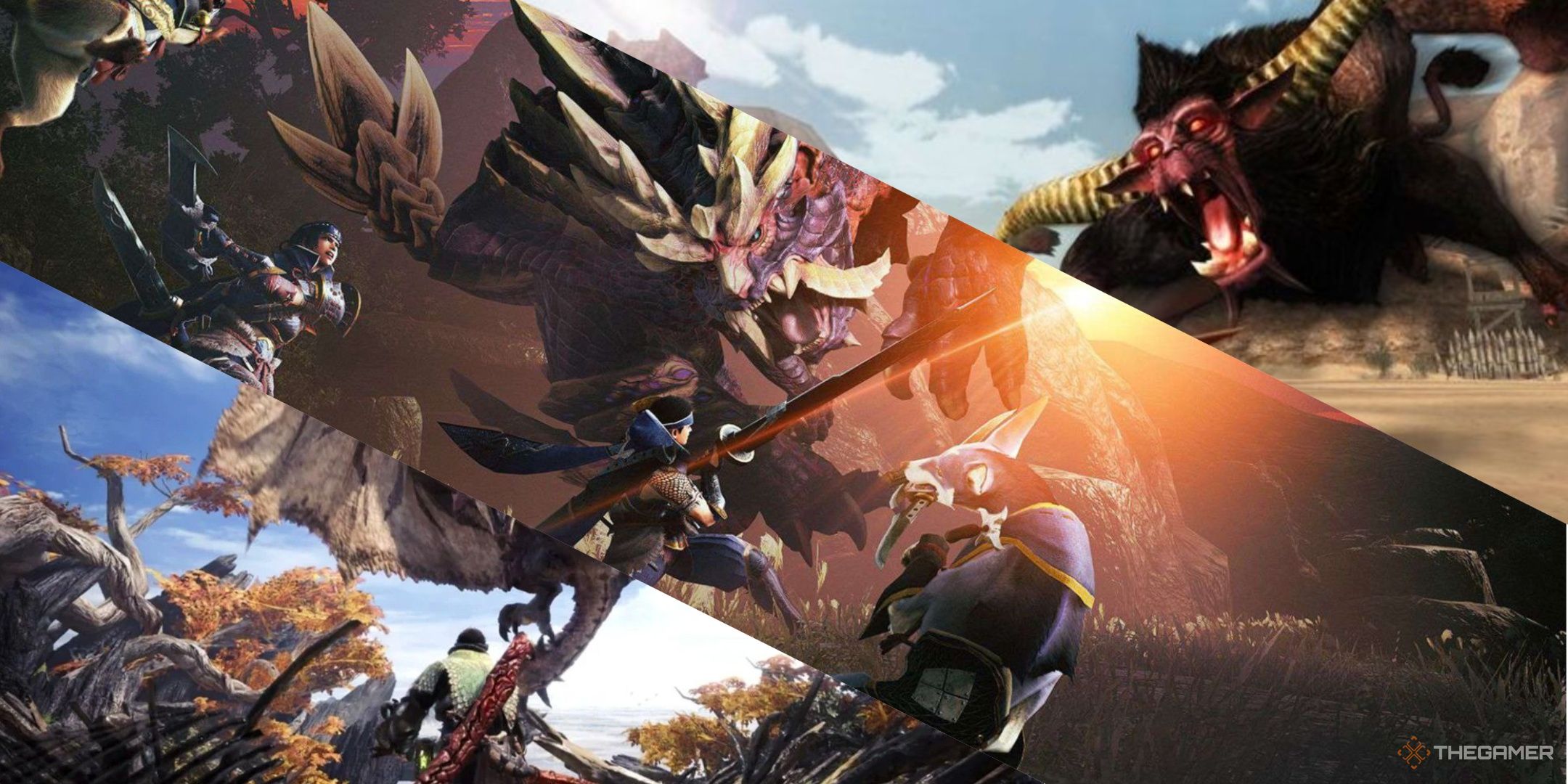
Related
Every Monster Hunter Game In Chronological Order
Monster Hunter continues to be well and alive after almost two decades. With so many titles, it can be confusing to know how to play them in order.
Rather than having a set of peculiarly talented Felyne chefs to help you out, you have to fend for yourself this time around. That means gathering up all your materials, finding the right way to combine them, and cooking them all up yourself. This is a slightly involved system and requires some leg work for the best ingredients, so let’s find out where to find them.
Every Type Of Ingredient
Creating a meal is pretty simple in Monster Hunter Wilds, and can be done just about anywhere. Back in your tent, you can cook a meal, but you can whip out the Portable BBQ Grill anywhere else to cook up a meal all the same. The process of making a meal is as simple as picking out the materials, and there is only one you even need to use to actually make the meal.
Here is each piece of the meal and what each part does:
- Rations – These form the base of the meal to provide extra health, stamina, and defenses. They aren’t specific ingredients, but all of your rations divided into meat, fish, and veggies. These are the only required parts of a meal.
- Extra Ingredients – These can be added after your Ration to add skills and lengthen how long the meal effects last. . These are specific ingredients, and also have better versions of each ingredient.
- Finishing Touches – These can be added after the Extra Ingredients, and add more skills and more defenses and resistances. These ingredients are the rarest, and there is only one type of each.
Rations are the most copious of all your ingredients, being the total each of every fish you have caught, the amount of raw meat you have, and the number of herbs you’ve picked up. Extra Ingredients and Finishing Touches are a bit harder to come by though. Each of them is a unique item with a unique effect. They’re a great addition to every meal though, so let’s see where to find more of them.
How To Get More Ingredients
To continue making all these delicious meals, you’ll need the components materials. While you can make them with just Rations, you’re not going to get a very fulfilling or powerful meal from that. So here’s how to get each category of ingredient.
Rations
Rations are easy. Forming the base of the meal, finding more is easy-peasy and you’ll naturally come across so much you’ll likely never even have to worry about this.
Despite being divided as meat, fish, and veggies, they are actually just your regular rations. You can grab these from the supply pouch at the beginning of every hunt, or by visiting the Provisions Master at the Windward Plains Base Camp.
That’s it. Rations are very generous so you’ll never really be short.
Each extra ingredient is typically reminiscent of the culture in each area. Kunafa Cheese in the Windward Plains, Mud Shrimp in the Oilwell Basin, and so on. Because of this though, you can’t really find these items randomly. Instead, they are given as quest rewards with few exceptions.
However, after defeating the Apex monster in each area, you can trade with the people there. This allows you to give them some items they desire, typically from other areas, in exchange for other rare items. This is the most surefire way to get more Extra Ingredients.
Keep in mind that the items available for trade change every in-game day, so try to get the items you want as soon as you see them.
Finishing Touches
Finishing Touches are more general than Extra Ingredients, but significantly rarer than Rations. They don’t have guaranteed drops and must instead be farmed. However, you can track them with some degree of certainty.
For example, Eastern Honey and Wild Herbs are low drop item from Honey and Herbs respectively, though the chance of them dropping is dramatically increased during the Plenty, so this is the best time to go farming for them.
Jeweled Mullet Roe, on the other hand, can be caught alongside fish. The rarer the fish, the higher the chance of getting Jeweled Mullet Roe.
Monster Chili and Wild Seed Oil, on the other hand, can only be obtained as random rewards or through trading.
Every Ingredient And What It Does
Every ingredient also has a unique effect when added to a meal, beyond the default bonus associated with its category. This is important to keep in mind so you can make the perfect meal to fit each hunt.
You can also save your favourite meals and name them so you can quikcly make them whenever you want, provided you have the ingredients.
Here is each ingredient and what it does in a meal:
|
Ingredient |
Type |
Skill |
|---|---|---|
|
Meat |
Ration |
No Skill |
|
Fish |
Ration |
No Skill |
|
Veggies |
Ration |
No Skill |
|
(Sharp) Kunafa Cheese |
Extra |
Defender Meal Lo/Hi |
|
Drool/Delishroom |
Extra |
Black Belt Meal Lo/Hi |
|
Mud/Turbid Shrimp |
Extra |
Tumbler Meal |
|
Fluffy/Airy Egg |
Extra |
Caprice Meal Lo/Hi |
|
(Specialty) Sild Garlic |
Extra |
Moxie Meal Lo/Hi |
|
Wild Herb |
Finishing Touch |
Immunizer Meal |
|
Eastern Honey |
Finishing Touch |
Medic Meal |
|
Monster Chili |
Finishing Touch |
Sizzling Meal |
|
Jeweled Mullet Roe |
Finishing Touch |
Swimmer Meal |
|
Wild Seed Oil |
Finishing Touch |
Specialist Meal |
|
Truffle Du Conga |
Finishing Touch |
Gatherer Meal |
There are quite a few ingredients to choose from when making a meal. While the act of cooking and the gorgeous visuals of the meal are a reward in and of itself, the actual in-game benefits are pretty good too. Now get out there and make a meal that would put the Meowscular Chef to shame.
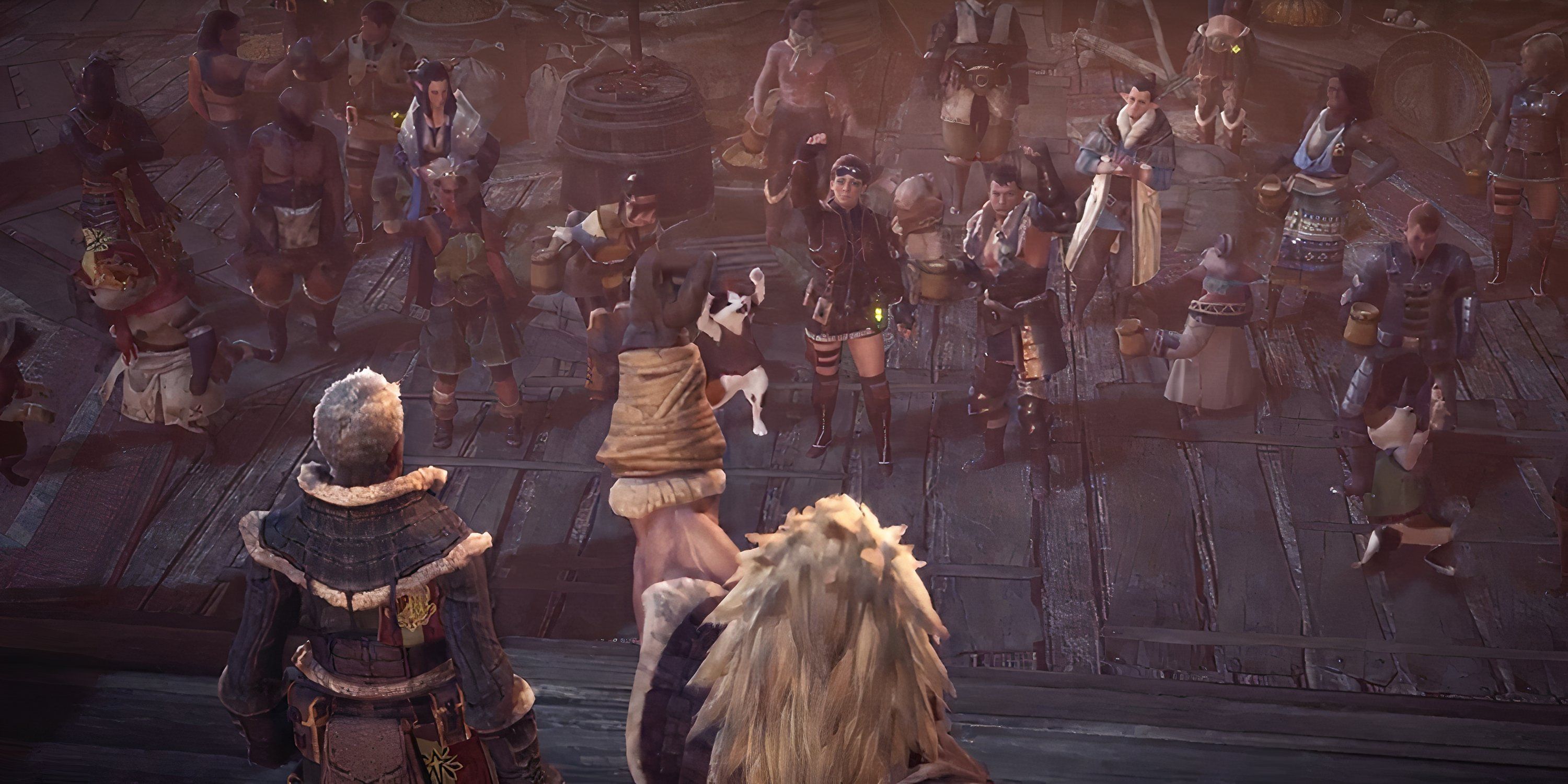
Next
Some of the most entertaining NPCs you’ll meet in the Monster Hunter series.


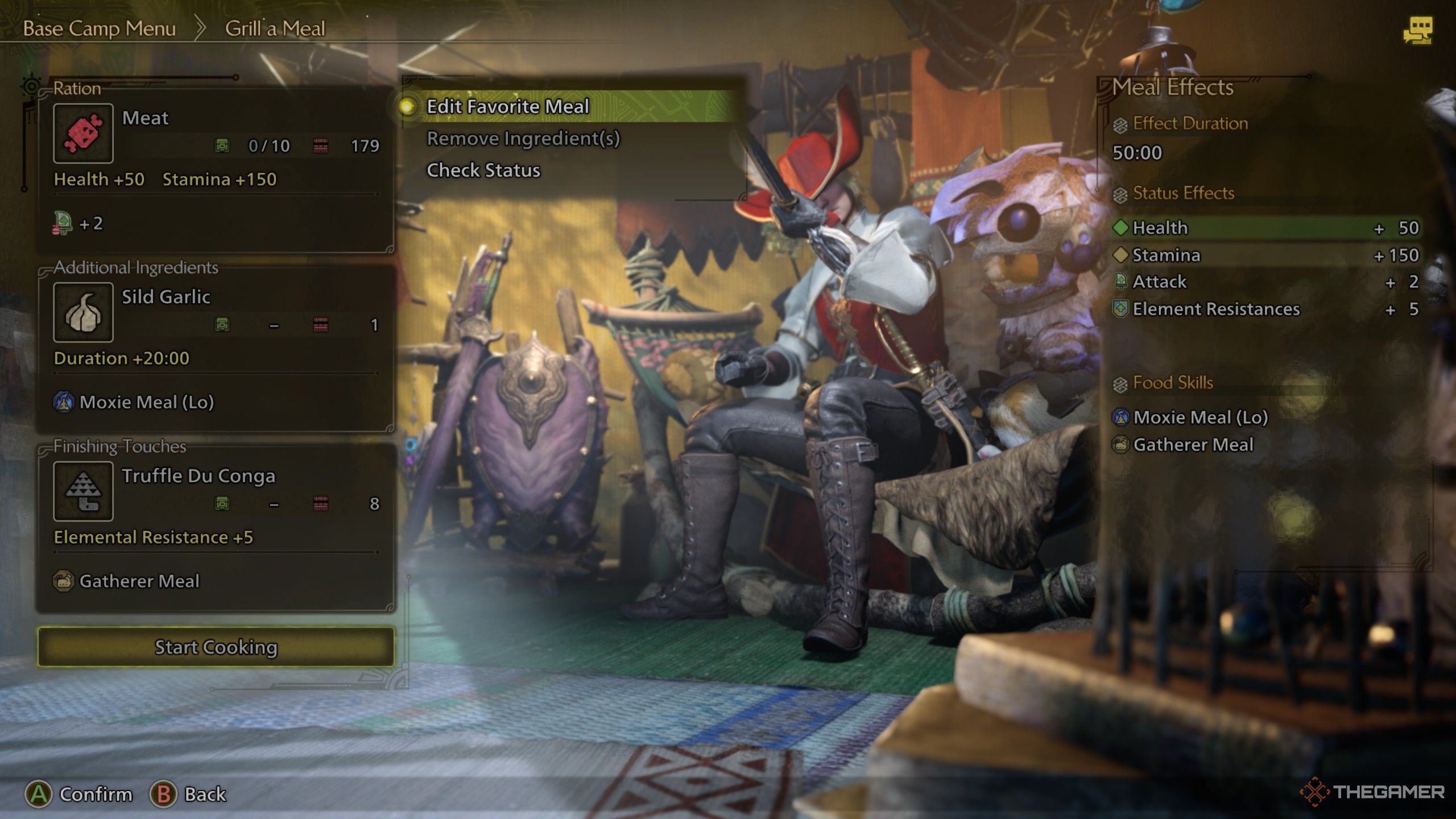
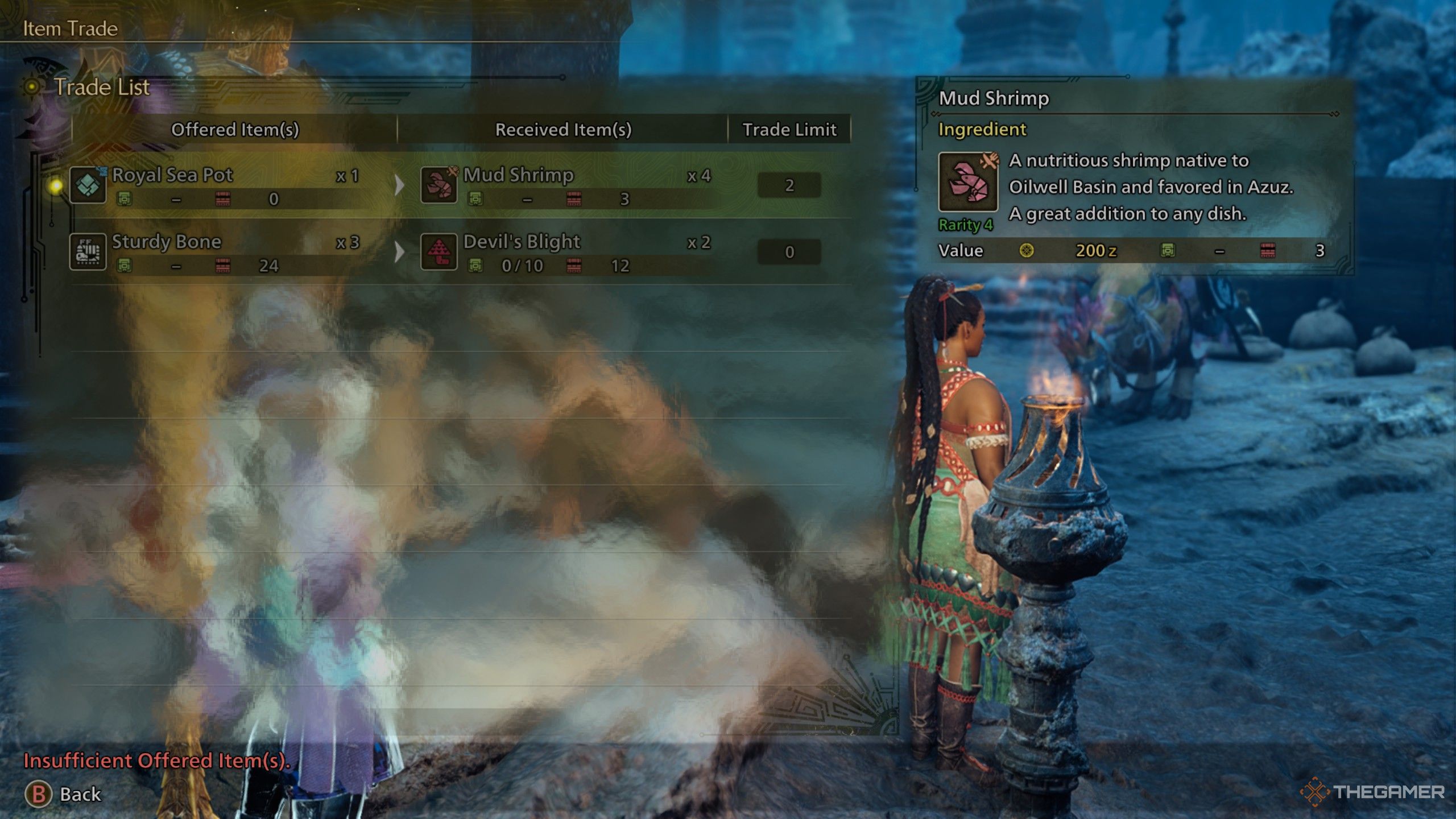
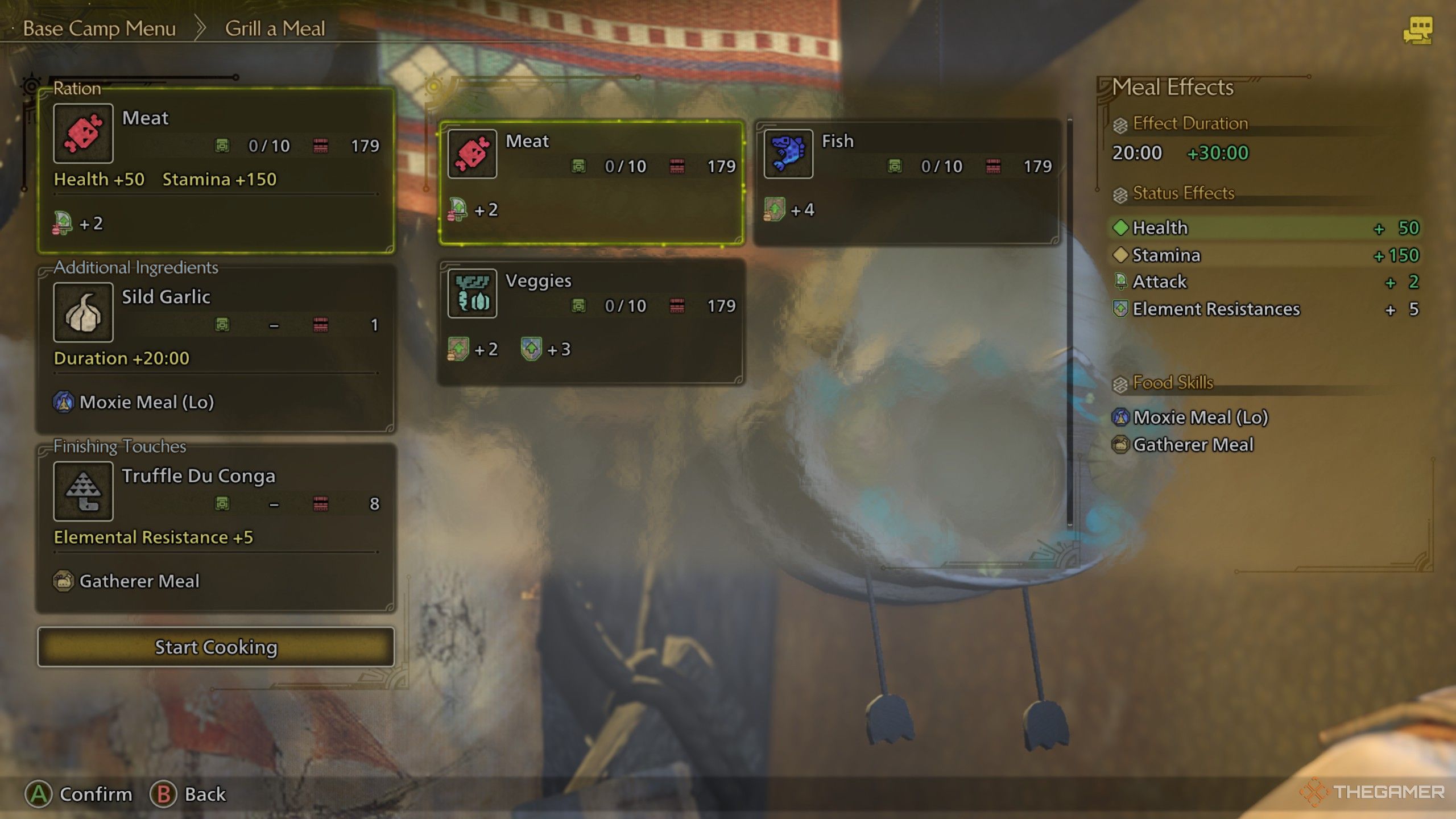
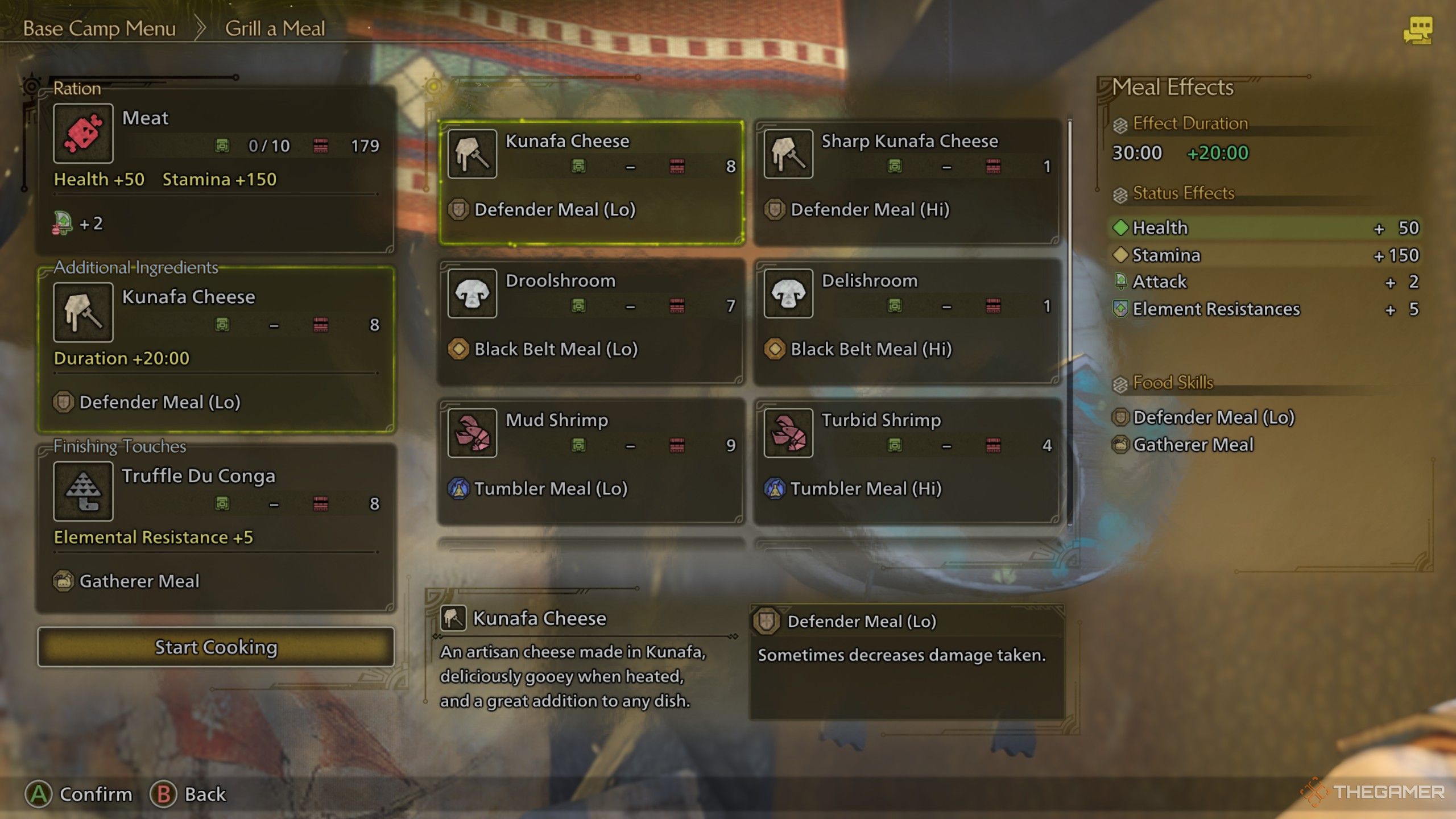

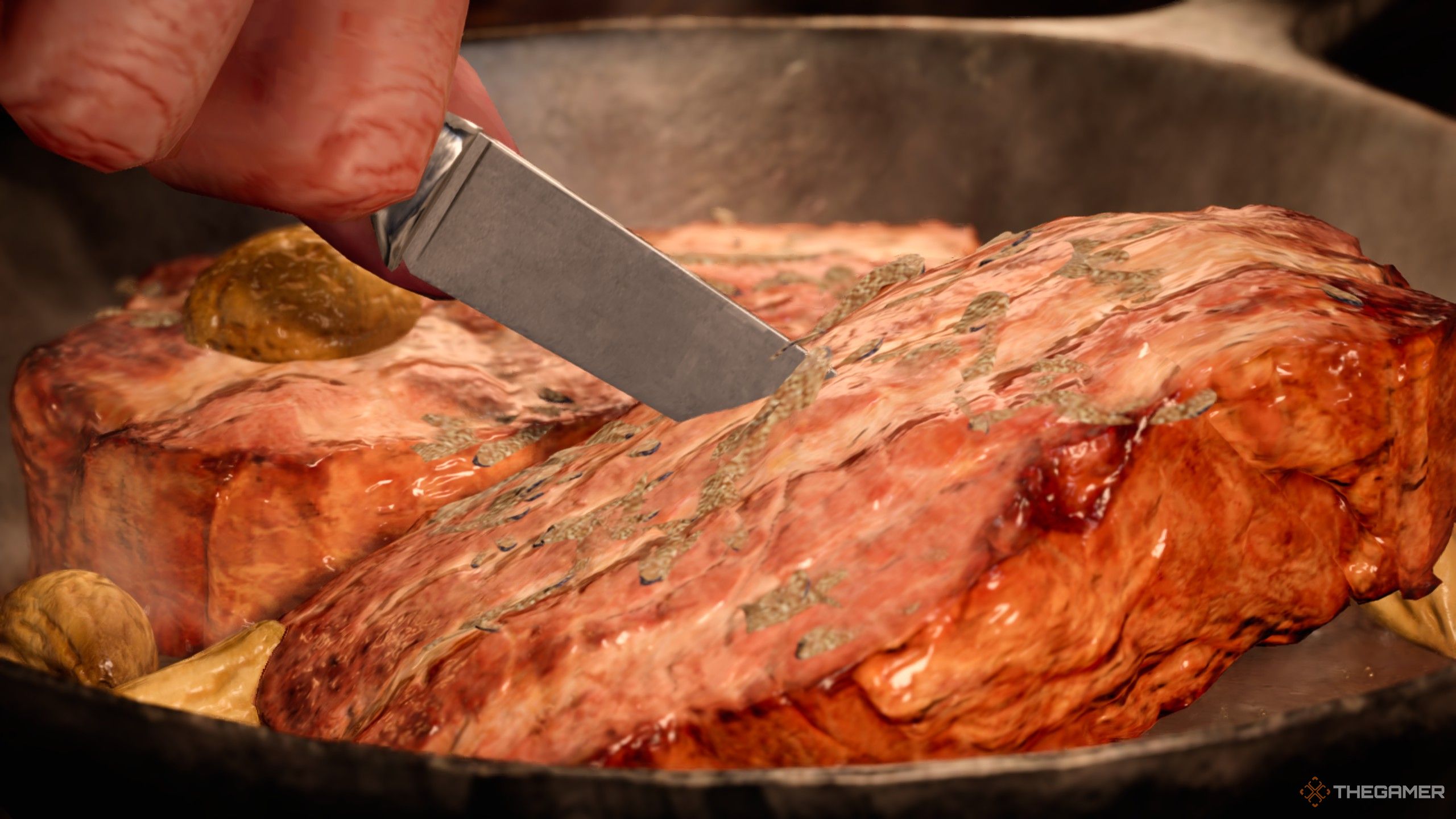



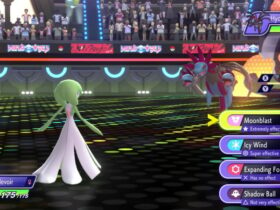






Leave a Reply